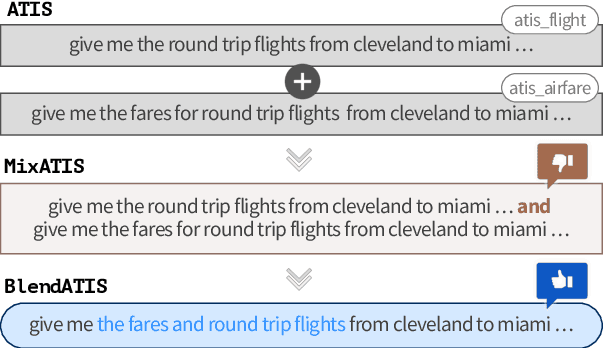Jungyeon Lee
HyperCLOVA X Technical Report
Apr 13, 2024Abstract:We introduce HyperCLOVA X, a family of large language models (LLMs) tailored to the Korean language and culture, along with competitive capabilities in English, math, and coding. HyperCLOVA X was trained on a balanced mix of Korean, English, and code data, followed by instruction-tuning with high-quality human-annotated datasets while abiding by strict safety guidelines reflecting our commitment to responsible AI. The model is evaluated across various benchmarks, including comprehensive reasoning, knowledge, commonsense, factuality, coding, math, chatting, instruction-following, and harmlessness, in both Korean and English. HyperCLOVA X exhibits strong reasoning capabilities in Korean backed by a deep understanding of the language and cultural nuances. Further analysis of the inherent bilingual nature and its extension to multilingualism highlights the model's cross-lingual proficiency and strong generalization ability to untargeted languages, including machine translation between several language pairs and cross-lingual inference tasks. We believe that HyperCLOVA X can provide helpful guidance for regions or countries in developing their sovereign LLMs.
BlendX: Complex Multi-Intent Detection with Blended Patterns
Mar 27, 2024



Abstract:Task-oriented dialogue (TOD) systems are commonly designed with the presumption that each utterance represents a single intent. However, this assumption may not accurately reflect real-world situations, where users frequently express multiple intents within a single utterance. While there is an emerging interest in multi-intent detection (MID), existing in-domain datasets such as MixATIS and MixSNIPS have limitations in their formulation. To address these issues, we present BlendX, a suite of refined datasets featuring more diverse patterns than their predecessors, elevating both its complexity and diversity. For dataset construction, we utilize both rule-based heuristics as well as a generative tool -- OpenAI's ChatGPT -- which is augmented with a similarity-driven strategy for utterance selection. To ensure the quality of the proposed datasets, we also introduce three novel metrics that assess the statistical properties of an utterance related to word count, conjunction use, and pronoun usage. Extensive experiments on BlendX reveal that state-of-the-art MID models struggle with the challenges posed by the new datasets, highlighting the need to reexamine the current state of the MID field. The dataset is available at https://github.com/HYU-NLP/BlendX.
 Add to Chrome
Add to Chrome Add to Firefox
Add to Firefox Add to Edge
Add to Edge